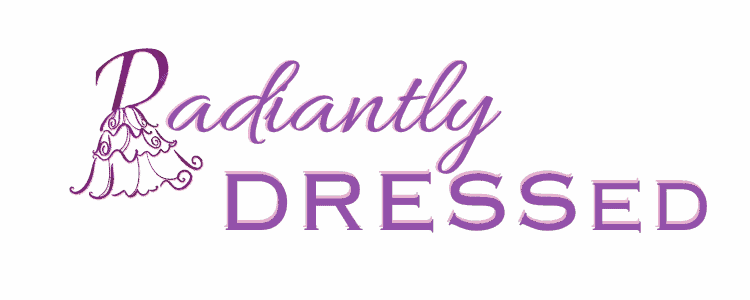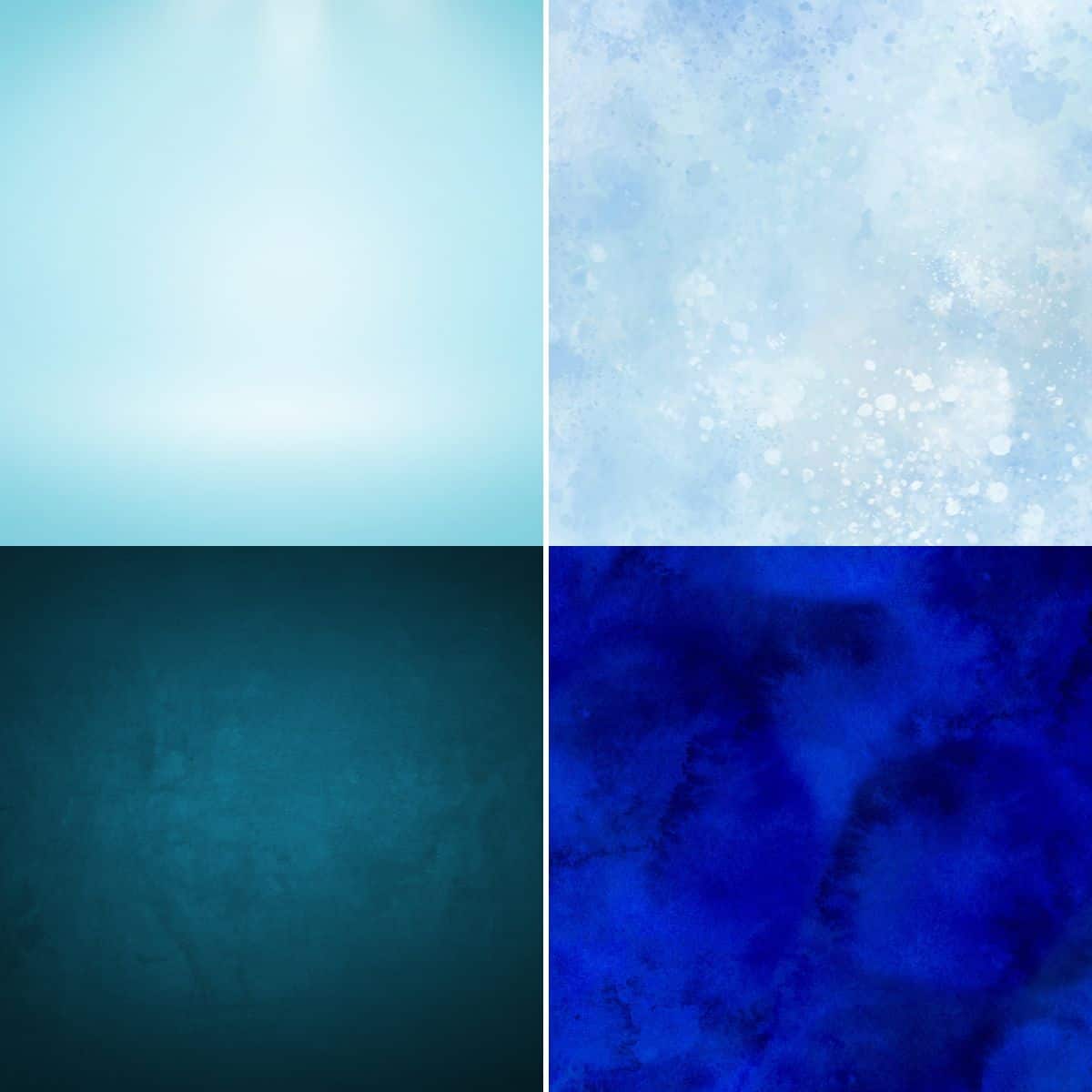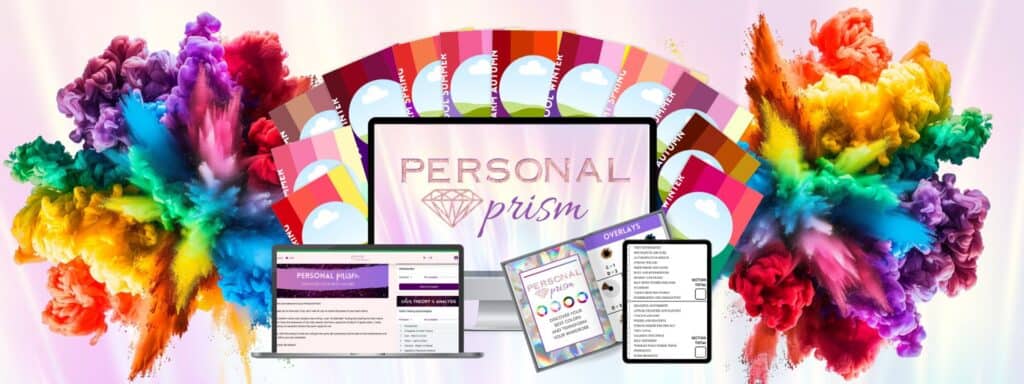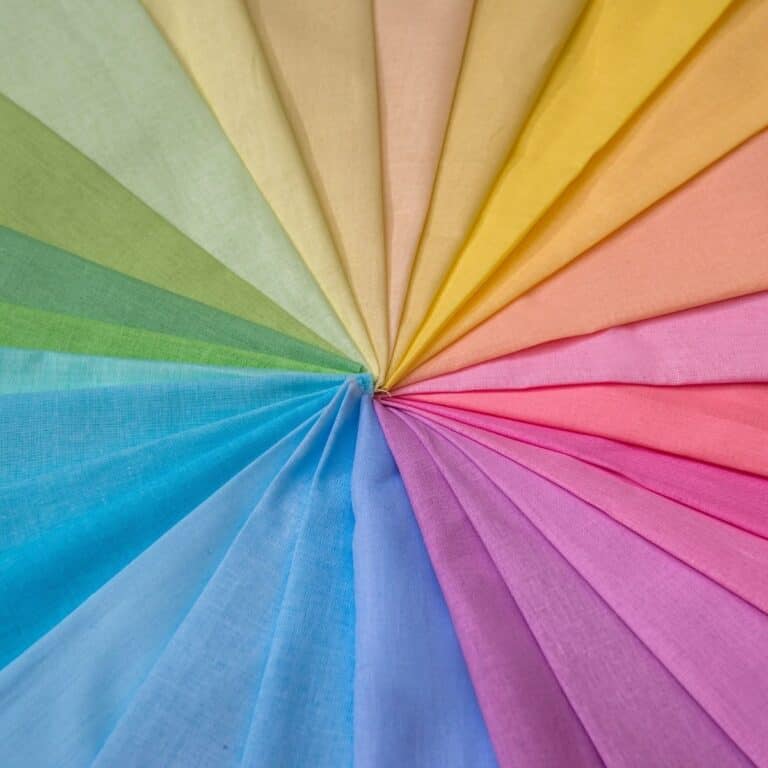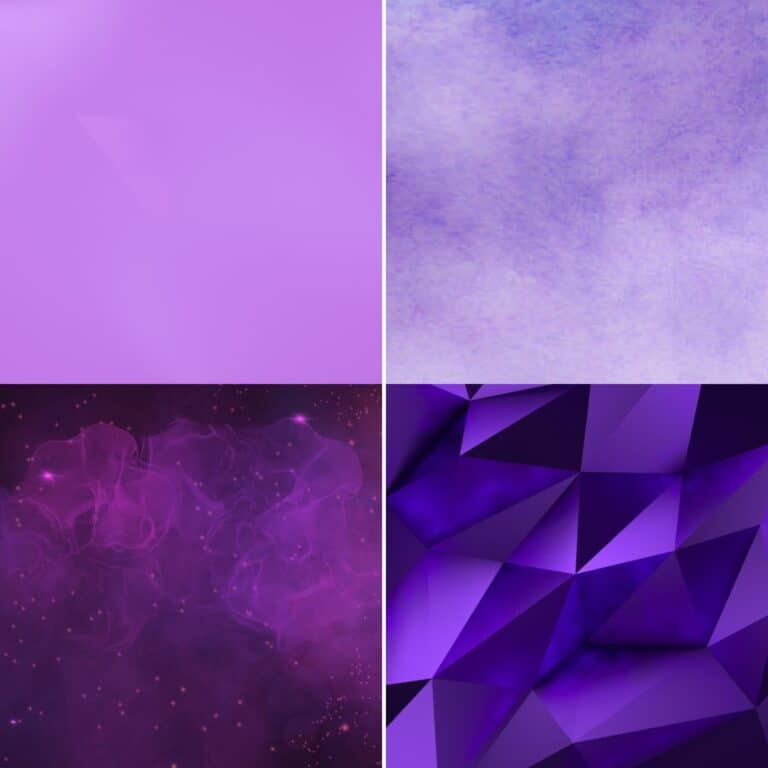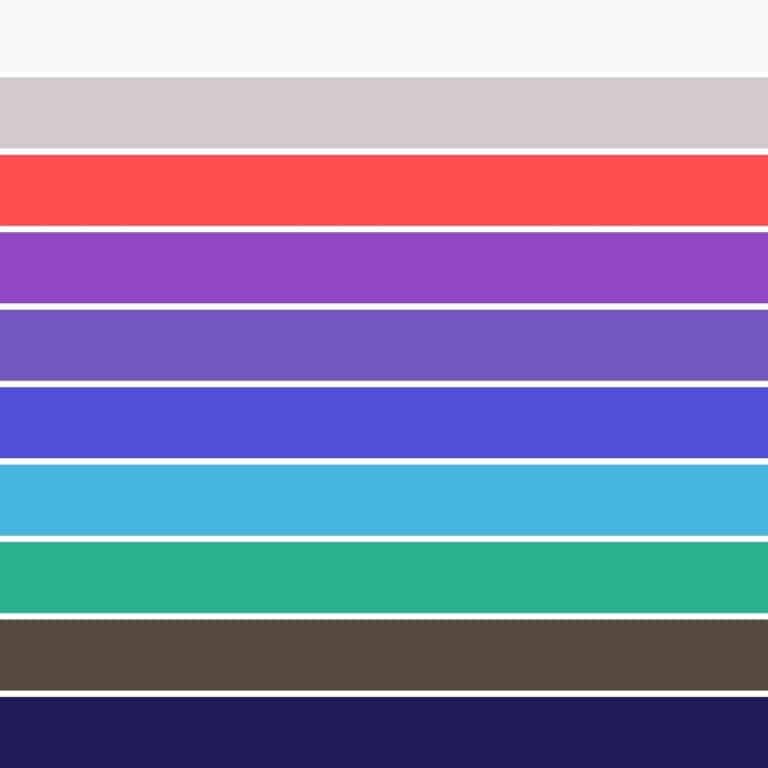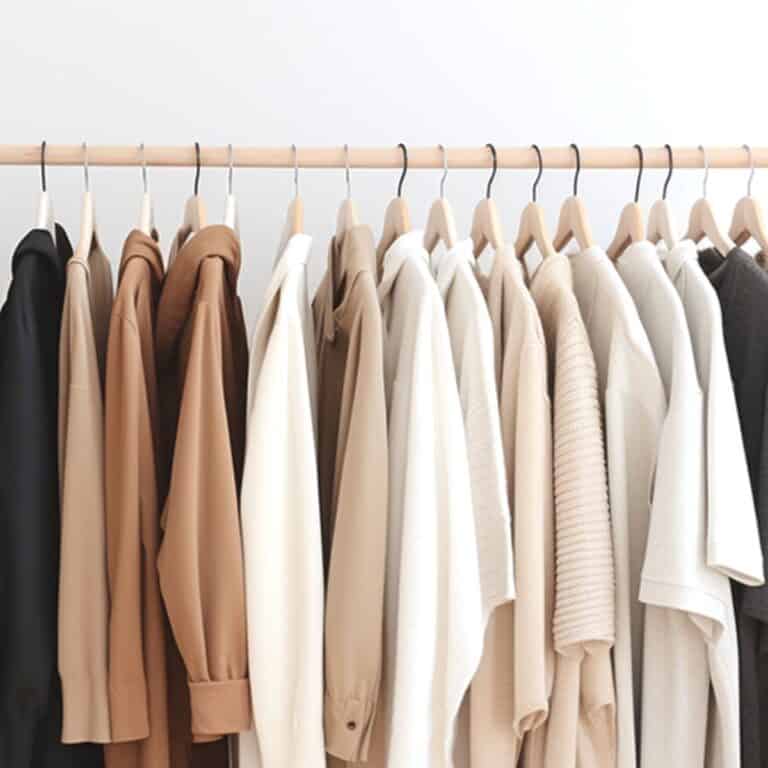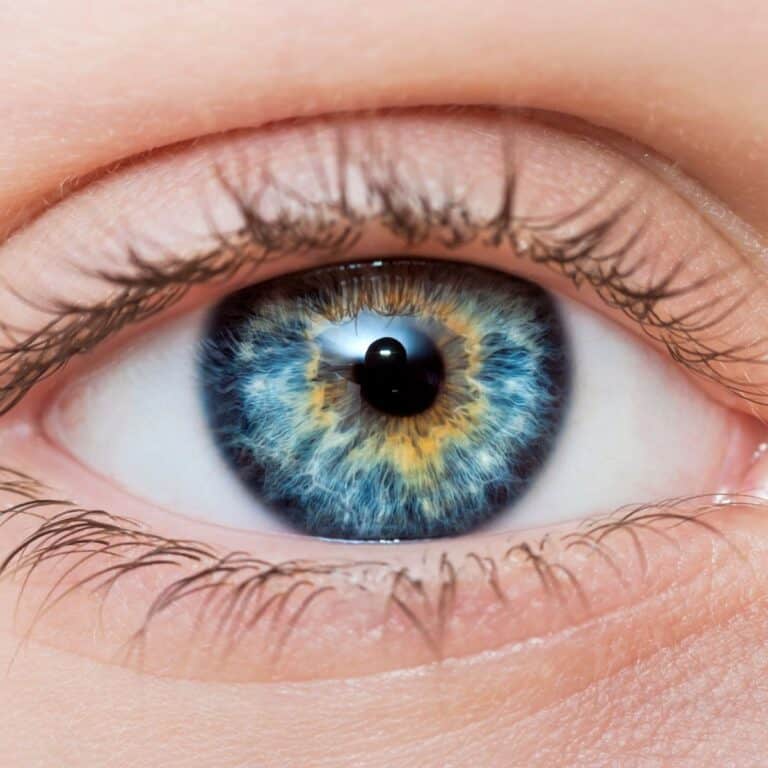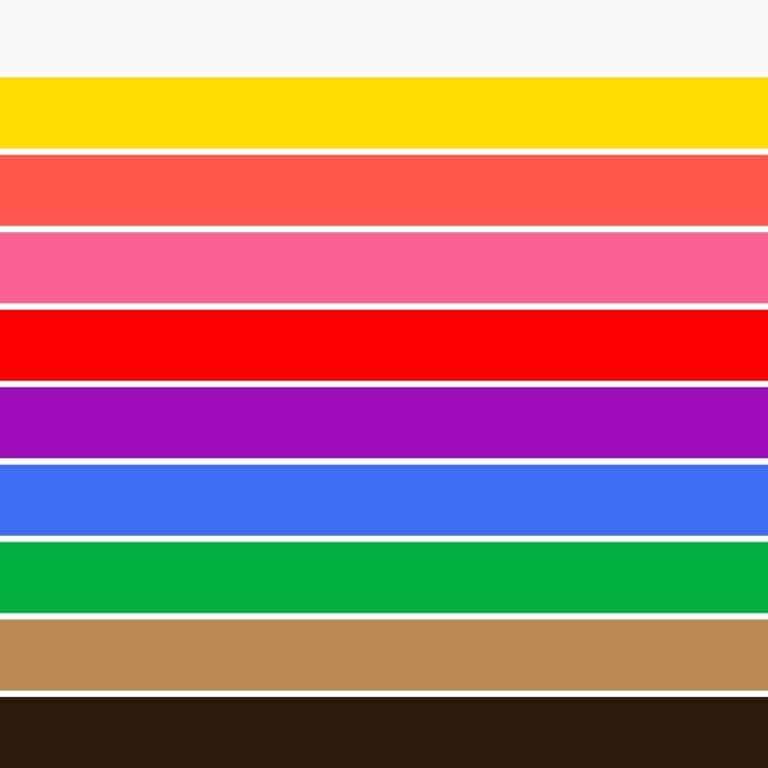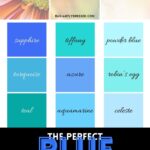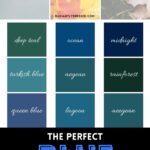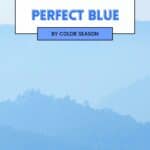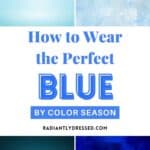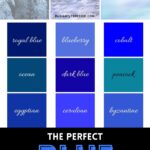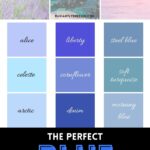Choosing the right shade of blue can transform your look, making your features stand out and enhancing your natural beauty.
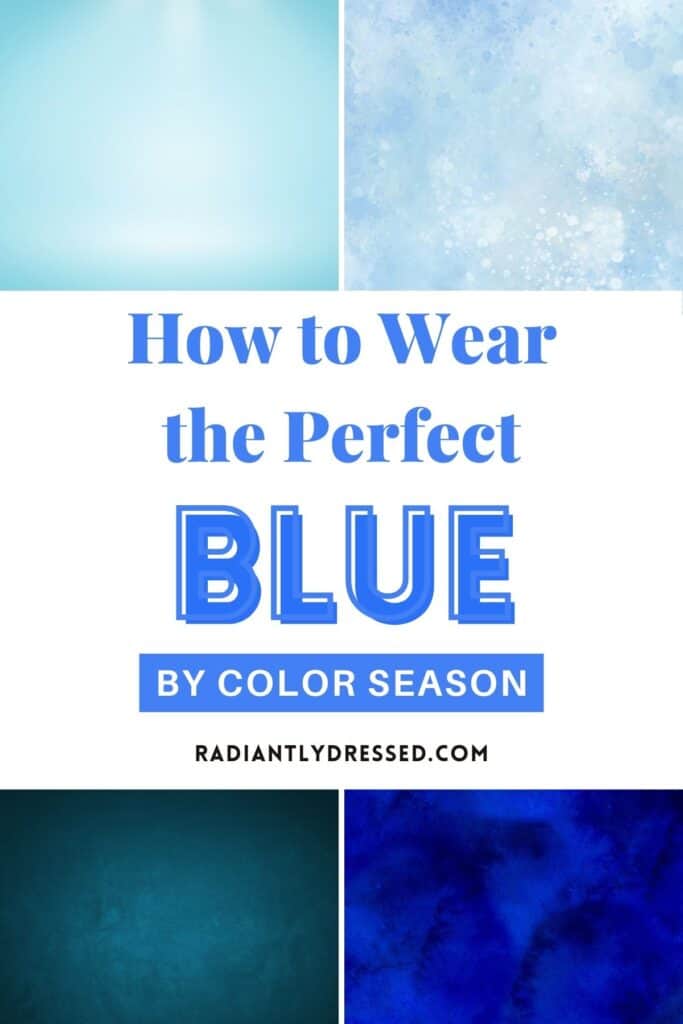
Blue is a versatile and universally flattering color that brings a sense of calm, confidence, and sophistication to any outfit. Whether you prefer soft pastels or deep, rich tones, blue can seamlessly enhance your style.
Understanding your personal color season can help you determine which colors harmonize best with your natural features such as skin undertones, eye color, and hair shade. Knowing your color season can guide you in choosing clothing and makeup that best enhances your appearance.
For those with a spring color palette, vibrant and warm blues can accentuate your lively undertones. Summers, on the other hand, shine in softer, pastel blues, which highlight their softer, cooler features. Autumns benefit from rich, deep blues that harmonize with their warm, muted undertones. Winters, characterized by their stark contrasts, look stunning in bold, icy blues.
Discovering the best blue for your season will not only complement your natural colors but also boost your confidence and style.
Table of Contents
The Psychology of Blue
The color blue is often associated with calmness, reliability, and tranquility. Wearing blue can evoke a sense of peace and serenity, helping to alleviate stress.
It’s also linked to feelings of trust and dependability. This makes blue an excellent choice for professional settings, as it creates an atmosphere of reliability. Furthermore, blue can enhance concentration and mental clarity.
People often perceive those who wear blue as trustworthy and competent. Darker shades, such as navy or cobalt, can convey authority and confidence, while lighter shades like sky blue can make you appear more approachable and friendly.
Blue’s versatility in fashion is unparalleled. This color pairs well with almost any other hue, making it a versatile choice for mixing and matching.
You can wear blue in various shades and styles, from casual denim to elegant evening wear. Light blues are perfect for spring and summer, while deeper shades suit fall and winter wardrobes.
Blue accessories, such as scarves, ties, or handbags, can add a pop of color to neutral outfits. Since blue flatters many skin tones, you can wear it year-round without worry. Whether dressing up or keeping it casual, blue effortlessly adapts to your style needs.
Understanding Color Seasons
Color seasons are a concept in fashion and beauty that relate to finding the colors that best match your natural features like skin tone, hair color, and eye color. There are 4 major seasons that split into 3 smaller sub-seasons each:
- Spring – warm and light with bright contrast: clear spring, warm spring, light spring.
- Summer – cool and light and muted: light summer, cool summer, soft summer.
- Autumn – warm and dark with low contrast: soft autumn, warm autumn, deep autumn.
- Winter – cool and dark with high contrast: deep winter, cool winter, clear winter.
Here’s a quick way to get started in identifying your season:
- Observe your natural skin tone, eye, and hair color.
- Compare these to the typical characteristics of the four seasons.
- Notice how certain colors impact your appearance—do they make you look vibrant or washed out?
Want to find your season? Grab the DIY color analysis course today and find your best colors.
Tired of going round in circles trying to figure out your color season? Hack the same process used by professional color analysts to figure out your season from the comfort of your home, and stop feeling confused about color analysis with Personal Prism.
Now that you know a little more about color seasons, you’re on your way to choosing shades of blue that make you look your best!
The Perfect Blue for Spring Seasons
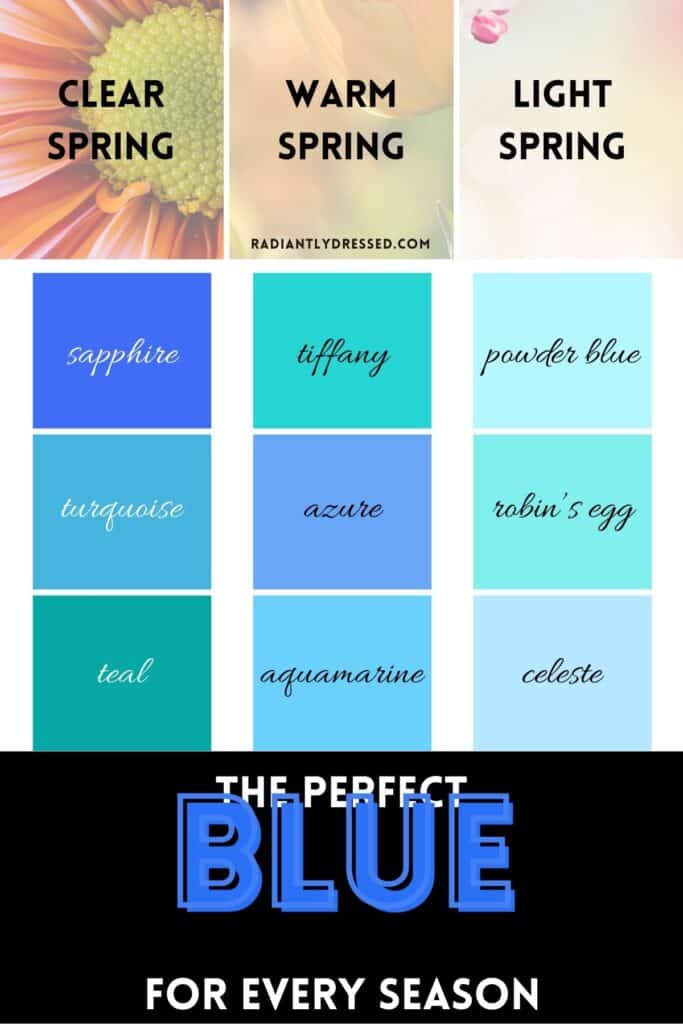
The three spring seasons are warm in undertone, overall light in value, and bright in chroma or saturation. The blues for these seasons need to have those same characteristics. There is some crossover in the blues that work, but slight adjustments can be made for changes in saturation and value.
For clear spring, consider bold, bright, blues such as sapphire, turquoise, and teal.
For warm spring, stick with bright warm blues like tiffany, azure, aquamarine.
Light spring needs slightly lighter versions of blue, such as powder blue, robin’s egg, and celeste.
The Perfect Blue for Summer Seasons
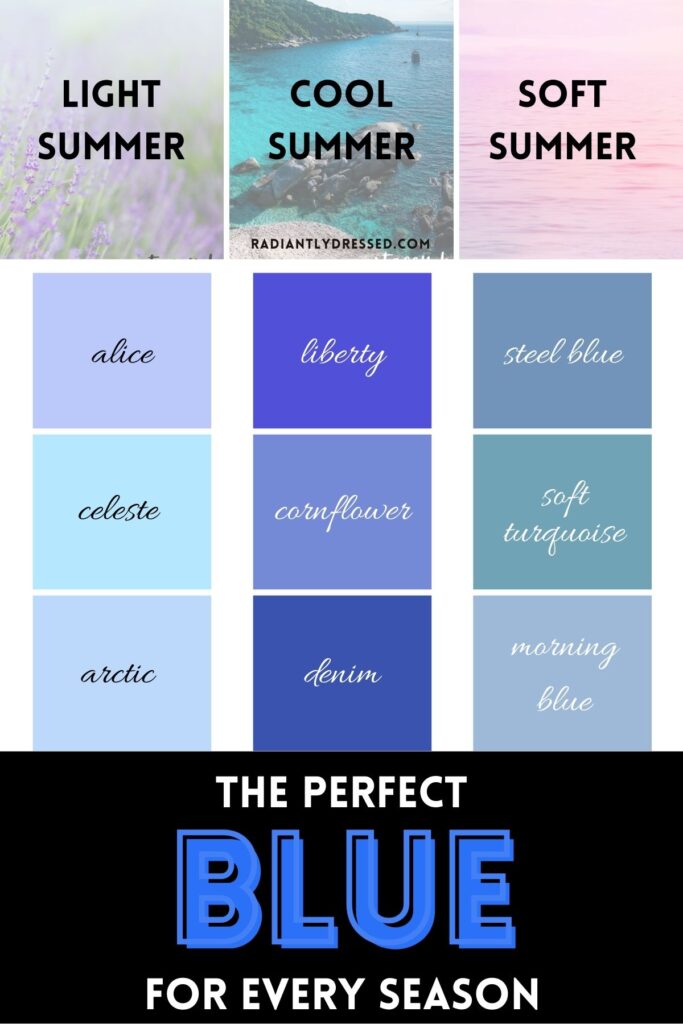
The three summer seasons are cool in undertone, overall light in value, and muted in chroma, not very saturated. Choosing blues with those same characteristics will create a harmonious appearance. These blues will work for all 3 summer seasons, but reflect the variations in intensity and depth.
Light summer will do best in the most pastel versions of blue such as alice, celeste, and arctic.
Cool summer steals a bit of brightness from its sister season of winter and can wear shades like liberty, cornflower, and denim.
Soft summer sticks with muted blues such as steel blue, soft turquoise, and morning blue.
The Perfect Blue for Autumn Seasons
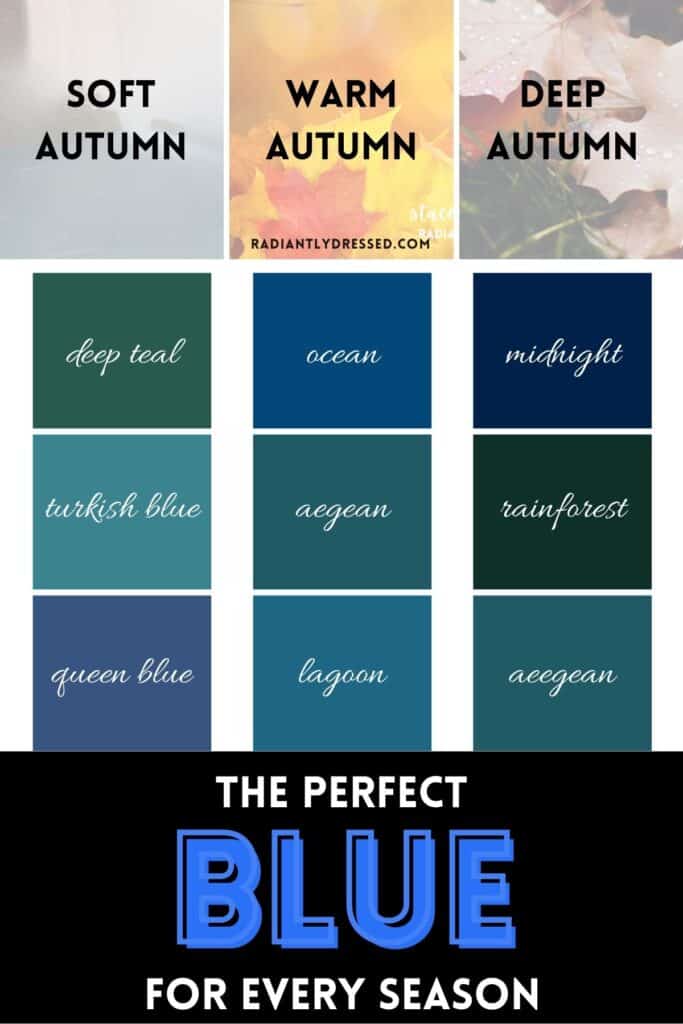
Autumn types are warm in undertone, overall dark in value, and muted in chroma, with a bit of muddiness to the colors. The three autumn seasons should choose blues that mimic the soft characteristics of this type. You can always borrow from your sister seasons, but the blues for each sub-season show slight variations for chroma and value.
For soft autumn, consider muted blues like deep teal, turkish blue, and queen blue.
Warm autumn gets a bit of a brightness boost, and blues such as ocean, aegean, lagoon work well.
Deep autumn is one of the darkest seasons and should stick to shades of blue like midnight, rainforest, and aegean.
The Perfect Blue for Winter Seasons
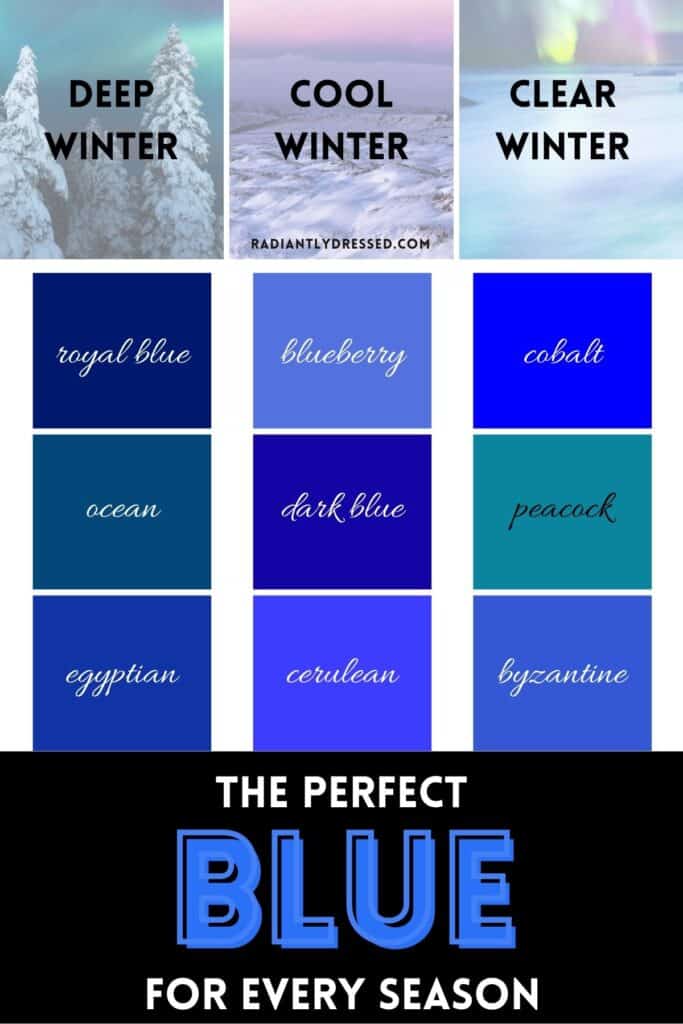
The three winter seasons are cool in undertone, darker in value, and exhibit a high degree of contrast or saturation. The blue for this season are bright, blue-based shades. The range can be worn by all winters, so choose based on your level of brightness or depth.
Deep winter needs dark blues such as royal blue, ocean, egyptian.
Cool winter needs the bold true blues like blueberry, dark blue, cerulean.
For clear winter, choose the brightest versions of cool blue such as cobalt, peacock, and byzantine.
Blue Styling Tips
Mixing Patterns and Textures
Incorporating blue through patterns and textures can add a refreshing and stylish flair to your outfits. Blue floral prints on flowy fabrics like chiffon or cotton evoke a serene and elegant vibe. Stripes or polka dots in blue shades bring a lively and playful touch, perfect for any season.
Experiment with textures by pairing a cozy blue knit sweater with classic denim jeans or a silk blouse with a tweed skirt. Mixing different textures not only adds visual interest but also keeps your attire sophisticated and engaging. Blue accessories, such as scarves, handbags, or shoes, can seamlessly tie your outfit together while adding a pop of color and personality.
Layering with Blue
Layering is an excellent way to incorporate blue into your ensembles. Start with a deep navy blue turtleneck or cardigan as a foundational piece. Pair it with a neutral trench coat or a leather jacket to create a balanced and stylish look that’s perfect for cooler weather.
Lighter shades of blue are also great for layering. A sky blue blouse under a grey blazer adds a soft, refreshing touch to your outfit. Don’t be afraid to mix and match textures, such as pairing a woolen blue scarf with a satin top, to create depth and dimension in your look. Layering different shades of blue can also add a monochromatic sophistication to your ensemble.
Blue as an Accent Color
If wearing blue as the main color feels too bold, using it as an accent is a great alternative. Accessories like scarves, belts, or gloves in vibrant blue hues can add a lively touch to your look without being overpowering. Imagine a cobalt blue scarf against a camel coat or navy blue gloves with a cream sweater.
Jewelry is another subtle way to introduce blue. Pieces with blue gemstones or beads, such as sapphire earrings or turquoise necklaces, can complement your outfit and add a touch of elegance and color close to your face.
Blue Accessories
Blue accessories are an easy way to infuse this color into your outfits without overwhelming your style. Think chic blue handbags, sunglasses, or even nail polish. These small touches can make a big impact and are easily interchangeable.
For a more understated effect, consider blue belts, scarves, or hats. A blue belt can add a splash of color to a monochrome dress, while a blue hat or scarf can refresh classic neutral outfits with a seasonal twist. Mixing and matching blue accessories with different outfit combinations keeps your style vibrant and dynamic. For example, pairing a royal blue tote bag with a white summer dress or denim and a light blouse can instantly elevate your look.
Accessorizing with Blue
- Jewel-Toned Elegance: Rich jewel tones like sapphire, turquoise, and midnight blue bring a touch of luxury and sophistication to any outfit. Sapphire earrings or turquoise necklaces can serve as striking focal points, enhancing both casual and formal looks. A deep blue clutch adds a vibrant pop of color, perfect for elevating monochrome or neutral ensembles.
- Playful Pops of Color: Bright shades like sky blue and aqua add a fun and lively element to your wardrobe. Sky blue shoes can transform simple outfits into standout ensembles, while an aqua belt injects vibrancy and highlights your silhouette. A bright blue bag is a bold choice that showcases your adventurous spirit and energizes your look.
- Natural and Earthy Vibes: Earthy blues like denim, teal, and slate create a grounded and harmonious style. A denim blue scarf adds warmth and texture to neutral outfits, while a teal hat offers a sophisticated touch. Delicate slate blue jewelry provides a soft, calming effect, perfect for enhancing everyday wear.
- Mixing and Matching Blue Accessories: Combining different shades of blue can create a cohesive yet dynamic look. Layering blue jewelry or choosing gradient-effect bags adds dimension and interest to your ensemble. Coordinating blue footwear and headwear in varying shades brings a harmonious yet varied appearance to your outfit.
- Blue for Bold Statements: Make a strong impression with bold blue accessories that draw attention. Large, chunky blue necklaces or oversized earrings can become the focal point of your outfit, adding drama and flair. Distinctive blue boots or heels elevate your style, turning heads and showcasing your confident fashion sense.
Blue offers a range of possibilities to enhance your wardrobe with its calming, versatile, and stylish nature. Whether through bold statements or subtle accents, incorporating blue into your outfits can add a touch of elegance and personality to your look. Experiment with different shades and combinations to find what makes you feel confident and fabulous.
Perfect Blue Color Pairings
Blue is a versatile color that beautifully complements every season. Whether it’s the soft pastels of spring, the vibrant hues of summer, the earthy tones of autumn, or the cool contrasts of winter, there’s a perfect blue pairing for every time of year.
Spring
- Blue and Pastel Yellow: Fresh and delicate.
- Blue and Mint Green: Soft and serene.
- Blue and Peach: Vibrant and lively.
Summer
- Blue and White: Crisp and clean.
- Blue and Coral: Bright and cheerful.
- Blue and Lemon Yellow: Fun and lively.
Autumn
- Blue and Mustard Yellow: Deep and earthy.
- Blue and Burnt Orange: Warm and inviting.
- Blue and Olive Green: Luxurious and deep.
Winter
- Blue and Black: Bold and striking.
- Blue and Grey: Classic and sophisticated.
- Blue and Silver: Crisp and festive
When choosing the right combinations, consider the shades and undertones of the colors you are pairing. Play around with different options to see what makes you feel confident and stylish in every season.
Care and Maintenance of Blue Garments
Taking care of your blue garments is essential for maintaining their vibrant hue and longevity. Here are some straightforward tips to help you keep your blue clothing looking its best.
1. Wash in Cold Water
Always wash blue garments in cold water. Hot water can cause blue dye to fade quickly. Use a gentle detergent to preserve the color.
2. Separate Colors
Wash blue clothing separately from whites and other colors. Sorting your laundry will prevent color bleeding and maintain the brightness of your blues.
3. Turn Inside Out
Turn your garments inside out before washing. This reduces friction and protects the outer fabric from fading.
4. Avoid Over-Drying
Dry blue clothes on low heat or air-dry them. Over-drying in high heat can fade the color and weaken the fabric.
5. Use Vinegar
Add a cup of white vinegar to the wash cycle occasionally. Vinegar helps set the dye and keeps blue fabrics from fading.
6. Avoid Direct Sunlight
Dry your blue garments away from direct sunlight to prevent fading. Sunlight can cause the color to bleach out.
7. Iron with Care
If ironing is necessary, use a low-heat setting. High heat can fade and damage blue fabric. Iron garments inside out for added protection.
8. Storage Tips
Store blue garments in a cool, dry place away from direct sunlight. Using mothballs or cedar blocks can help prevent fabric damage over time.
Incorporating Blue for Work
Blue is a versatile and reliable color that can bring a sense of calm, authority, and sophistication to your professional attire. Whether you’re making a bold statement or adding subtle touches, here’s how to integrate blue into your work outfits for a polished and stylish look.
Blue as a Statement Piece
Make a powerful impression with blue by choosing it as the main element of your outfit. Navy blue is particularly effective for projecting authority and professionalism. A well-tailored navy blazer or dress can serve as the cornerstone of your work wardrobe, conveying confidence and sophistication.
Pair these pieces with neutral colors like white, beige, or grey to keep the focus on the boldness of blue. For a modern twist, consider a cobalt blue dress or a royal blue pantsuit, which adds vibrancy while maintaining a professional tone.
Subtle Blue Accents
For a more understated approach, use blue as an accent color in your accessories. Blue scarves, belts, or handbags can add a touch of color without dominating your outfit. Opt for muted shades like slate or dusty blue to keep the look refined. Blue jewelry, such as sapphire earrings or aquamarine bracelets, offers a subtle yet elegant way to incorporate color. These accessories are perfect for adding a hint of blue, enhancing your professional look with a touch of personal flair.
Blue in Understated Prints
Incorporating blue through prints is a stylish way to add depth and interest to your office wear while keeping the look professional. Choose tops or blouses with understated blue patterns, such as small florals, pinstripes, or polka dots. These designs add a touch of personality without overwhelming your outfit.
Pair printed blue tops with solid-colored skirts or trousers to maintain a balanced and cohesive appearance. A navy blue scarf with a delicate print can also add sophistication and texture to your ensemble.
Blue Bottoms
Blue trousers or skirts provide a fresh alternative to traditional office colors. Navy blue trousers offer a sleek and modern look, especially when paired with crisp white blouses or light grey blazers. A slate blue pencil skirt can bring a sophisticated and feminine touch to your professional wardrobe.
For a bolder choice, try a pair of royal blue culottes or a deep teal A-line skirt. These pieces can be easily mixed and matched with neutral tops for a versatile and stylish office look.
Layering with Blue
Layering is an excellent way to incorporate blue into your work attire, especially during transitional weather. A navy blue cardigan or light blue sweater can be layered over a white blouse or under a tailored jacket, adding warmth and a pop of color. Light blue layers, like a chambray shirt or a baby blue knit, are perfect for spring, while deeper shades like indigo or midnight blue work well for autumn and winter. A structured blue blazer can also add a sharp and polished edge to any outfit, making it a staple for any professional wardrobe.
Footwear with a Hint of Blue
Incorporate blue into your professional attire through your footwear for a subtle yet impactful addition. Blue shoes, such as navy pumps, cobalt flats, or teal loafers, can beautifully complement your outfit. Deep blue shoes provide a classic and understated look, ideal for pairing with business suits or dresses.
For a touch of flair, choose shoes in brighter shades like azure or cerulean. In cooler weather, blue ankle boots or knee-high boots can add style and comfort to your professional ensemble.
Combining Blue with Neutrals
Blue blends seamlessly with neutral colors, making it easy to integrate into your professional wardrobe. Combine blue with black, white, grey, or beige for a balanced and harmonious look. A navy blue blouse paired with a black pencil skirt or grey trousers creates a sophisticated and elegant appearance. Alternatively, a white shirt with blue trousers or a beige blazer over a blue dress offers a fresh and polished look, perfect for maintaining a professional presence in the office.
Balancing Boldness and Subtlety
Achieve the perfect balance between bold and subtle with your use of blue. For a daring approach, try color blocking with blue and other solid colors like red or mustard yellow. This creates a striking yet harmonious outfit that stands out while remaining professional. If you prefer a more muted look, choose softer shades of blue such as sky or powder blue. These colors provide a serene and professional presence, enhancing your attire without drawing too much attention.
By thoughtfully incorporating blue into your professional attire, you can enhance your work wardrobe with elegance and confidence. Whether through bold statement pieces or understated accents, blue offers a versatile and sophisticated option for expressing your style while maintaining a polished and professional look in the office.
Frequently Asked Questions about How to Wear Blue
How do I determine which shade of blue suits my color season? Understanding your color season involves analyzing your skin tone, eye color, and hair color to see if you fall into Spring, Summer, Autumn, or Winter. Each season has specific shades of blue that harmonize best with your natural features. You can use a color analysis guide or consult a professional to determine your season.
What are the best blue shades for Spring color types? Spring color types look great in vibrant and warm blues. Consider shades like turquoise, teal, and aquamarine for clear and warm spring types. Light spring should opt for softer, lighter blues like powder blue and robin’s egg blue.
Which blues work well for Summer color types? Summer color types should choose soft, cool, and muted blues. Shades like celeste, alice blue, and arctic blue are perfect for light summers. Cool summers can wear slightly brighter blues such as liberty and cornflower, while soft summers benefit from muted tones like steel blue and soft turquoise.
What blues are best for Winter color types? Winter color types look stunning in cool, deep, and high-contrast blues. Deep winter can embrace dark blues like royal blue and ocean blue. Cool winter shines in true, bold blues such as blueberry and cerulean. Clear winter should choose the brightest versions of cool blue like cobalt and peacock blue.
Can I mix different shades of blue in one outfit? Yes, mixing different shades of blue can create a cohesive and dynamic look. Pairing lighter and darker blues or combining different textures and patterns in blue can add depth and interest to your outfit.
How can I incorporate blue into my professional wardrobe? Blue is perfect for professional settings. Consider a navy blazer for authority, or add subtle blue accents through scarves, belts, or jewelry. You can also choose blue prints for blouses or go for blue trousers or skirts to keep your look polished and sophisticated.
What are some stylish ways to accessorize with blue? Blue accessories can enhance your outfit effortlessly. Try a chic blue handbag, sapphire earrings, or a teal scarf. For a bolder touch, consider blue shoes or a statement blue necklace. These pieces can add color and elegance to any ensemble.
How does the color blue influence mood and perception in fashion? Blue is often associated with calmness, reliability, and tranquility. It evokes feelings of peace and trust, making it an excellent choice for professional and casual wear. Darker blues convey authority and confidence, while lighter blues make you appear approachable and friendly.
Related Color Analysis Articles:
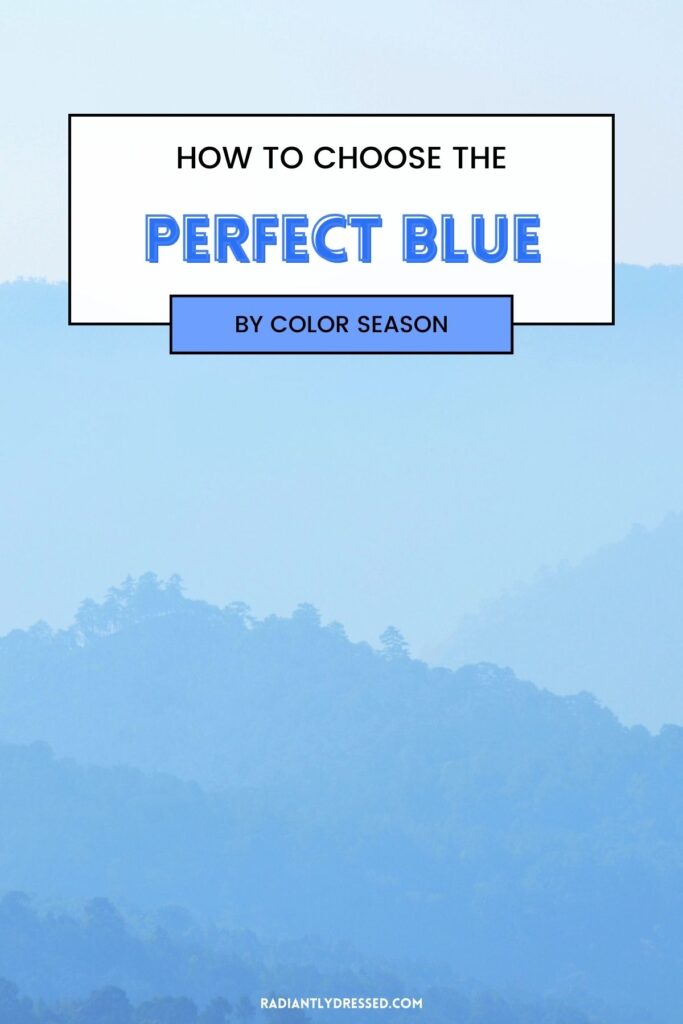
By wearing the right shade of blue for your season, you enhance your natural beauty and make your wardrobe choices more intentional and cohesive.
Stacey is the owner and creator behind Radiantly Dressed. She is a certified image consultant and AICI member focusing on creating simplicity in wardrobes via color and style.

